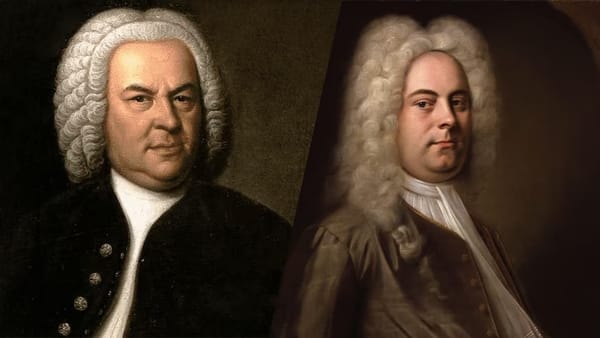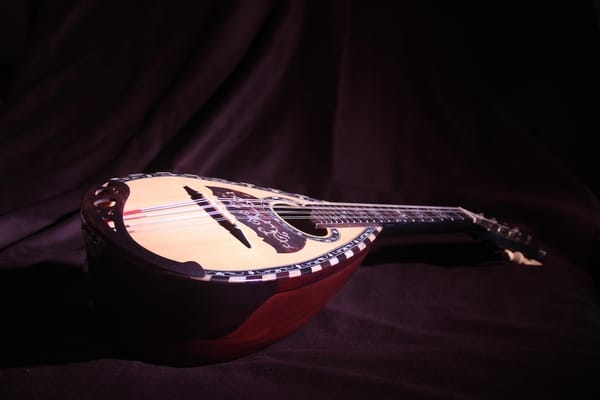The Importance of Sight Reading Skills
Sight reading is a foundational skill that shapes every aspect of musicianship. It builds fluency, confidence, and versatility, helping musicians learn repertoire faster, perform more securely, and thrive in ensemble and professional settings.

Sight reading is one of the most essential abilities in a musician’s toolkit, yet it is often undervalued or relegated to the periphery of music education. Many students and even accomplished performers devote hours to practising repertoire, perfecting technique, and refining interpretation, but spend comparatively little time strengthening their capacity to read and perform music at first sight. In reality, sight reading is an indispensable skill that supports every aspect of musical development. It promotes fluency, confidence, versatility, and independence, and it greatly enhances a musician’s professional opportunities.
This article explores the importance of sight reading within classical music training and performance, and considers why it remains one of the most beneficial and transformative skills for musicians of all ages and abilities.
A Gateway to Musical Fluency
At its core, sight reading fosters musical literacy. Just as reading is central to language acquisition, sight reading encourages a direct and intuitive relationship between notation and sound. When a musician is able to look at a score and translate it almost instantly into accurate musical expression, they achieve a level of fluency that frees them from mechanical effort.
This fluency strengthens every facet of musicianship. Students who practise sight reading regularly become more comfortable with rhythmic patterns, intervallic relationships, harmonic progressions, and stylistic conventions. They begin to recognise familiar patterns rather than decode each note individually. This pattern recognition is fundamental because it allows the brain to process music in meaningful chunks, leading to faster comprehension and more assured playing.
Sight reading also supports the development of inner hearing, sometimes referred to as audiation. As students learn to anticipate musical structures and hear phrases internally before performing them, they cultivate a deeper and more intuitive understanding of musical syntax. This inner hearing then feeds back into their interpretative choices, enhancing expressiveness and nuance.
Building Confidence and Independence
One of the most noticeable benefits of good sight reading skills is the confidence it gives musicians. Students who struggle to decode notation often become anxious when confronted with unfamiliar music. They may feel dependent on teachers to play passages for them, or they may require considerable time to work through new pieces. Strong sight readers, by comparison, approach new scores with curiosity rather than apprehension.
This independence is liberating. A musician who sight reads well can explore a vast range of repertoire without needing external support. They can work through chamber music, art songs, solos, or orchestral excerpts purely for pleasure. They can also learn new pieces more quickly and efficiently, which is particularly valuable for those preparing for competitions, auditions, or examinations.
Confidence in sight reading also translates directly into real performance situations. Surprises inevitably occur on stage, particularly in ensemble settings. Cues are missed, pages turn prematurely, and fellow musicians occasionally falter. A strong sight reader can adapt instantly, ensuring the music continues with minimal disruption. This sense of capability is one of the hallmarks of professional musicianship.
An Essential Skill for Ensemble Playing
In orchestras, choirs, chamber groups, and accompanimental work, sight reading is not merely a useful extra. It is a requirement. Ensemble rehearsals often allow limited time to prepare new repertoire, and professional musicians are expected to perform to a high standard almost immediately. Conductors, in particular, rely on ensemble members who can read complex passages quickly and accurately, often with little more than a brief run through.
For pianists, organists, and other collaborative musicians, sight reading is even more critical. Accompanists frequently work with singers or instrumentalists who bring unfamiliar repertoire to a rehearsal. The ability to follow, support, and musically respond to a soloist in real time depends heavily on strong sight reading skills.
Chamber music similarly demands rapid adaptability. Each player must be able to navigate their part while responding to the phrasing, articulation, and dynamics of the ensemble. Weak sight reading can hinder the flow of rehearsal and compromise the musical experience for everyone involved.
Expanding Professional Opportunities
For many musicians, professional opportunities increase dramatically when they possess strong sight reading skills. This is especially true for freelance artists and young musicians seeking to establish themselves.
A pianist who sight reads well might be invited to accompany examinations, competitions, or masterclasses. Orchestral musicians with excellent reading skills are more likely to be hired as deputies for rehearsals or concerts. Choral singers who can sight read confidently are valuable in both professional and amateur choirs, where rehearsal time is often limited.
In teaching contexts, strong sight readers are better equipped to guide students through new repertoire. They can demonstrate passages fluently and anticipate technical or musical challenges. This level of assurance enhances their credibility and effectiveness as educators.
Supporting Examinations and Auditions
Most major examination boards place substantial emphasis on sight reading because it is considered a vital part of musical training. Examiners often note that candidates who sight read fluently tend to demonstrate better overall musicianship. They are more rhythmically secure, more aware of phrasing and structure, and more confident in their technical approach.
In auditions, sight reading is a frequent requirement, particularly for orchestras and conservatoires. Panels assess not only accuracy but also a candidate’s ability to maintain tempo, follow dynamics, and convey musicality even when the material is unfamiliar. Sight reading may not be the sole determinant of success, but it often serves as an indicator of a musician’s preparedness for rigorous musical environments.
Improving Practising Efficiency
Efficient practice is an essential skill for every musician, especially those with demanding academic or professional schedules. Sight reading contributes to efficient practice by making the initial stages of learning new repertoire considerably smoother. When a musician can navigate a new score quickly, they spend less time deciphering notes and more time refining interpretation and technique.
Sight reading also reduces the frustration that students sometimes feel when approaching difficult pieces. By becoming comfortable with the unfamiliar and the unexpected, they develop resilience and flexibility. Instead of being intimidated by complex notation, they approach new music with the understanding that it is simply another pattern to be recognised and internalised.
Cultivating a Lifelong Skill
Perhaps one of the most compelling reasons to develop sight reading skills is that it remains useful throughout a musician’s entire life. Unlike virtuosic technical achievements that may diminish without constant practice, sight reading tends to improve with experience and remains reliable even with age.
Adult learners returning to music often find that strong sight reading abilities help them re-engage with their instrument more quickly. Amateur musicians enjoy greater spontaneity when exploring repertoire or participating in ensembles. And professional musicians continue to rely on sight reading throughout their careers, especially when navigating large volumes of repertoire.
How to Strengthen Sight Reading
Although many musicians recognise the importance of sight reading, they may be unsure how to improve it. The key is consistency and exposure. Regular practice with unfamiliar music builds confidence and speed. Many teachers recommend dedicating a short amount of time each day to sight reading rather than practising it intensively in infrequent bursts.
Using materials that progress gradually in difficulty helps maintain motivation. Sight reading books, graded anthologies, hymnals, easy duets, and online resources can all provide helpful material. Playing with others, particularly in duets or chamber music, strengthens rhythmic security and encourages musicians to keep moving forward, which is a fundamental aspect of effective sight reading.
Above all, musicians should approach sight reading with an open and curious mindset. The aim is not perfection but continuity and musical understanding. With time, the skill becomes second nature.





